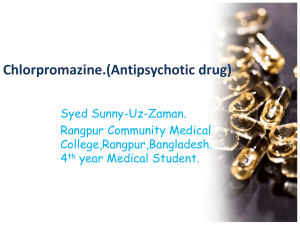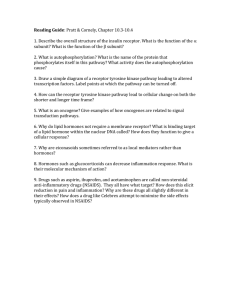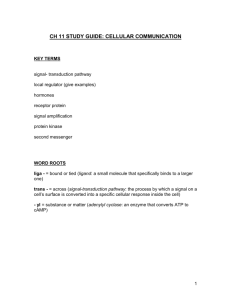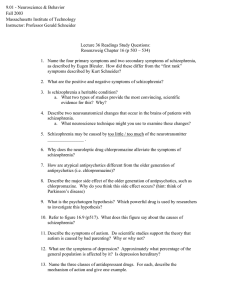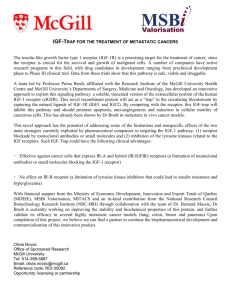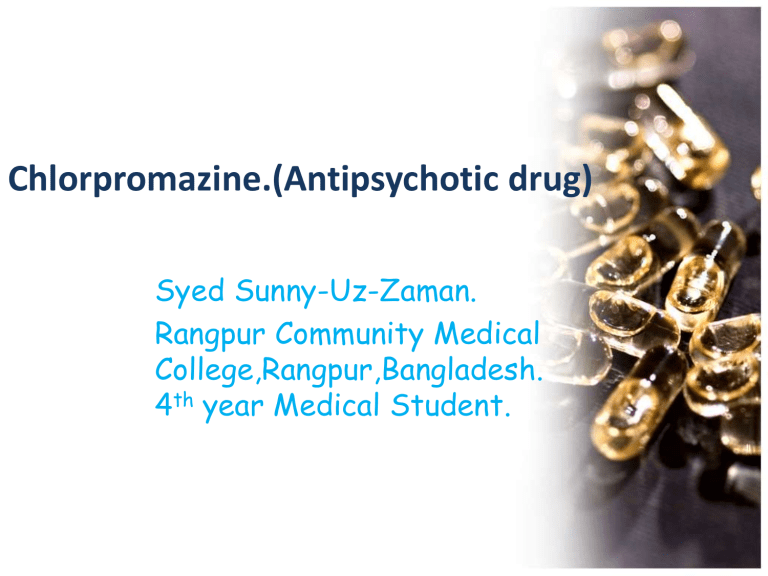
Chlorpromazine.(Antipsychotic drug) Syed Sunny-Uz-Zaman. Rangpur Community Medical College,Rangpur,Bangladesh. 4th year Medical Student. Chlorpromazine. Anti-psychotic Drug.(Phenothiazine Derivatives) Drug terminology. • Typical(First generation) antipsychotic. • Major tranquilizer- a misnomer. • Neuroleptics-prominent neurological side effects (EPS). Fig: Chlorpromazine Psychosis & Schizophrenia. John Nash.(1928) Nobel Prize Winner in 1994 in mathematics. Syd Barret (1946-2006) Rock star. Psychosis & Schizophrenia. • Psychosis : “Cluster of disorders characterized by hallucination and / or loss of contact with reality.” • Psychosis disorders : i) Schizophrenia. ii) Schizoaffective disorder. iii) Delusional disorder. • Schizophrenia : “Neurological disease that affects a person’s perception,thinking,language,emotion and social behavior.” Psychosis & Schizophrenia. • Symptoms may be classified as : – Positive – “attention getter” symptoms i.e. hallucinations, delusions, bizarre behavior, disorganized speech – Negative – “crippling” symptoms i.e. apathy, lack of motivation, anhedonia – Cognitive - i.e. difficulty with attention, memory, and problem solving – Disorganized – i.e. disorganized speech, inappropriate affect Structure Activity Relationship. Chemical structure of chlorpromazine.(C17H19ClN2S) Structure Activity Relationship. • The phenothiazine structure from the basic nucleus of chlorpromazine. • Substitution at position (2) imparts antipsychotic activity • Substitution on the nitrogen at position(10) alters potency and adverse effects; the principal substitutions are: aliphatic, piperidine and piperazine. Pharmacokinetics. • Absorption: Readily absorbed from the GI tract.Bioavailability varies due to first-pass metabolism by liver. • Volume distribution: • Protein binding : 20 L/Kg >90% to plasma proteins,primarily albumin. Pharmacokinetics. • Metabolism : Extensively metabolized in the liver and kidney. It is extensively metabolized by cytochrome P450 isozymes CYP2D6(mainly).Hydroxylation at position 3 and 7 of the phenothaizine nucleus. In urine,20% of chlorpromazine and its metabolized are excreted unconjugated in the urine as unchanged drug. The remaining 80% consists of conjugated metabolites.The mejor metabolites are the monoglucuronide of N-dedimethylchlorpromazine and 7hyroxychlorpromazine.Approximately,37% of the administered dose of chlorpromazine is excreted in urine. Pharmacokinetics. • Route of elimination : Kidney, 37% in urine. • Half life : Approximately 30hours. • Route of administration: 1.Oral. 2.parental. 3.Rectal. Pharmacokinetics. Dopaminergic Pathways. 1. Mesocortical-mesolimbic pathway. 2. Nigrostriatal pathway. 3. Tuberoinfundibular pathway. 4. Medullary periventicular pathway. 5. Incerto hypothalamic pathway. Dopamine blockade effects. • Limbic and frontal cortical regions: antipsychotic effect. • Basal ganglia: Extrapyramidal side effects (EPS). • Hypothalamic-pituitary axis: hyperprolactinemia. Mechanism of Action. • Dopamine receptor blockade in mesolimbicmesocortical dopaminergic system. The primary therapeutic action of phenothiazines and haloperidol appears to involve blockade of the D2receptor, which inhibits adenylyl cyclase. Cont…. Fig: Mechanism of action of chlorpromazine. • Receptor affinity: i) Dopamin receptor.(D1,D2 ) ii) Adrenergic receptor.(α1 ) iii) Muscarinic receptor. (M2 Pharmacological Effects. • On CNS: 1.Mesolimbic pathway: i) Emotional quietening. ii) Affective indifference. iii) Psychomotor slowing. 2.Nigro-striated pathway: Parkinsonism. 3.Tubero-infundibular pathway: i) Gynaecomastia ii) Galactorrhoea. iii) Amenorrhoea. iv) Temderness of breast. • Cont…. Pharmacological Effects. 4. Others: i) Increased appetite. ii) Hypothermia. iii) Sedation. • On periphery : These effects are not produced by D2 receptor blocking. 1. Antimuscarinic effects: i) Dry mouth. ii) Dry eye. iii) Dry skin. 2.Antiadrenergic effects : i) postural hypertension. ii) Difficulty in ejaculation. Cont… Pharmacological Effects. 3. Hypersensitivity reaction : i) Agranulocytosis. ii) Skin rash. iii) Aplastic anaemia. Indications. Indications. • Psychoses : 1.Management of schizophrenia. 2. As antiemetic. 3. Psychotic depression.(Along with anti-depressant) 4. As sedative. 5.Disturbed behavior in patients. • Others : 1.Anxiety. 2. To potentiate hyponotics,analgesics& anaesthetics. Contraindication. 1. 2. 3. 4. 5. 6. 7. 8. 9. Hypersensitive to this drug. CNS depression. Bone marrow depression. Parkinson disease. Sever hypotension. Hepatic impairment. Elderly patients. Dementia patients. In leukopenia. Adverse Effects. System involved 1. ANS 2. CNS 3.Endocrine. Adverse effects Mechanisoms • Trachycardia. • Urine retention. • constipation. • Dry mouth & skin. Muscarinic receptor blockade. • Postural hypotension. • Reflex trachycardia. • Cardiac arrhythmias. α- adrenergic blocking. a) Extra-pyramidal symptoms: i) Parkinson’s syndrome. ii) Akathisia. iii) Tardive dyskinesia. iv) Seizures. Dopamine receptor blocking. b) Toxic confusional state. Muscarinic receptor blockade. c) Sedation. H1- receptor blockade. • Women: i) Amenorrhea. ii) False ‘+’ve pregnancy test. iii) Increased Libido. 4. Cardiac. • Venticular arrhythmia. • Cardiac conduction block. 5.others. • Skin eruption. • Agranulocytosis. • Men: i) Gynaecomastia. ii) Decreased Libido. Hyper-prolactinaemia. In case of over dose. Allergic reaction. Limitations in treatment with chlorpromazine. • No decrease in negative symptoms . • Patients often unable to function in society . • Require medication – disease is not cured . • Drop in number of institutionalized patients . • No substitute support system provided . Acknowledgement. • • • Dr. Anup Rahman Sir. Prof.Dr. Ehsanul Barri Sir. Dr. Joan Heller Brown, PhD Special Thanks. • • • • Dip Rabby. Tushar. Ramim And all of my friends for giving me the courage to make that path to step ahead. Ref: - www.drugbank.ca - www.en.wikipedia.org - www.iucr.org
